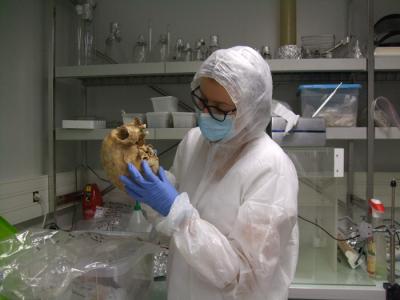
Credit: © Eva-Maria Geigl et Thierry Grange, Institut Jacques Monod (CNRS/Université de Paris)
A team led by scientists from the Institut Jacques Monod (CNRS/Université de Paris)* have shown that French prehistory was punctuated by two waves of migration: the first during the Neolithic period, about 6,300 years ago, the second during the Bronze Age, about 4,200 years ago. This study, published in PNAS on May 25, which looked at the genomes of 243 ancient individuals over 7,000 years, demonstrates how admixture between native hunter-gatherers and the first Anatolian Neolithic migrants, who brought with them a lifestyle based on agriculture, persists to this day in the genomes of French people. Admixture of the Neolithic populations with those from the Pontic steppes**, who arrived 4,200 years ago in what is now France, also left a lasting imprint, with the Y chromosome of the majority of French men still bearing the signature of men from the steppes.
###
Notes
*- This work also involved researchers from the French National Institute for Preventive Archaeological Research (Inrap), and several laboratories: Archaeology and Ancient History: Mediterranean-Europe (CNRS/Université de Strasbourg/Université de Haute Alsace), the Archaeology Research Unit for Mediterranean Societies (CNRS/Université Paul Valéry Montpellier 3/Ministère de la Culture/Inrap), ‘Trajectories. From sedentarisation to the state’ (CNRS/Université Paris 1 Panthéon Sorbonne/Inrap/Ministère de la Culture), Works and Archaeological Research on Cultures, Spaces and Societies (CNRS/ Université Toulouse Jean Jaurès/Ministère de la Culture) and ‘Cultures and Environments Prehistory, Antiquity, Middle Ages’ (CNRS/ Université Côte d’Azur).
**- The people of the western and European part of the Eurasian steppe, which continues eastward through southern Siberia, Kazakhstan, to Mongolia and Manchuria in northern China, probably brought metallurgy to the rest of Europe.
Media Contact
Alexiane Agullo
[email protected]




